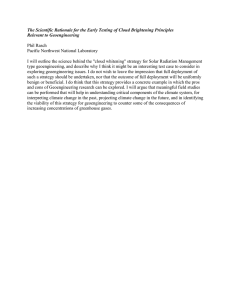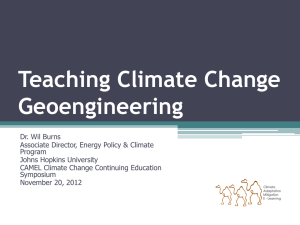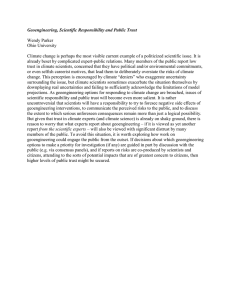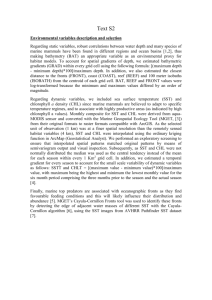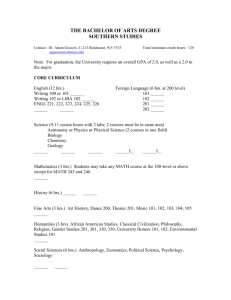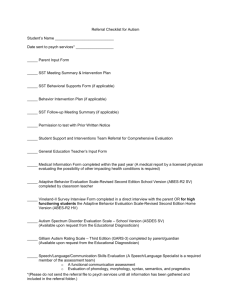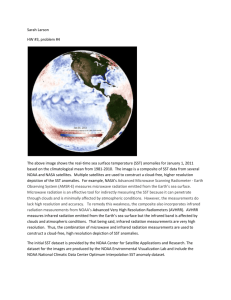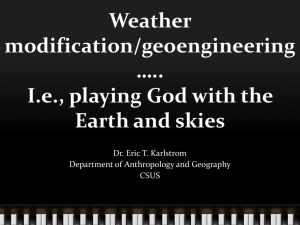docx - Alan Robock - Rutgers University
advertisement
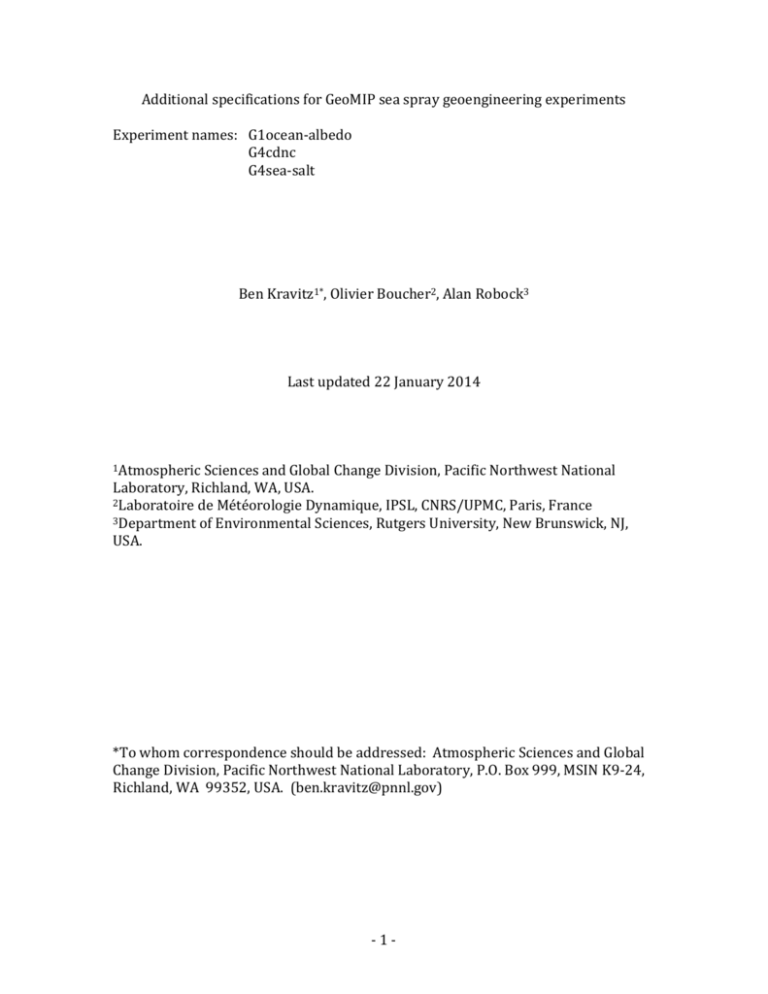
Additional specifications for GeoMIP sea spray geoengineering experiments Experiment names: G1ocean-albedo G4cdnc G4sea-salt Ben Kravitz1*, Olivier Boucher2, Alan Robock3 Last updated 22 January 2014 1Atmospheric Sciences and Global Change Division, Pacific Northwest National Laboratory, Richland, WA, USA. 2Laboratoire de Météorologie Dynamique, IPSL, CNRS/UPMC, Paris, France 3Department of Environmental Sciences, Rutgers University, New Brunswick, NJ, USA. *To whom correspondence should be addressed: Atmospheric Sciences and Global Change Division, Pacific Northwest National Laboratory, P.O. Box 999, MSIN K9-24, Richland, WA 99352, USA. (ben.kravitz@pnnl.gov) -1- 1. Introduction The purpose of this document is provide additional specifications for running the three sea spray geoengineering experiments in the Geoengineering Model Intercomparison Project (GeoMIP). Detailed explanations of the experiments, as well as most details of the protocol for running these simulations, can be found in Kravitz, B., et al. (2013), Sea spray geoengineering experiments in the Geoengineering Model Intercomparison Project (GeoMIP): Experimental design and preliminary results, J. Geophys. Res., 118(19), 11175-11186, doi:10.1002/jgrd.50856. 2. Official experiment names For the purpose of standardizing (CMORizing) the model output, the official (long)experiment names are G1ocean-albedo, G4cdnc, and G4sea-salt. The Earth System Grid Framework (ESGF) cannot handle hyphens as part of their short names. For the purposes of CMORization, the short names will be G1oceanAlbedo, G4cdnc, and G4seaSalt, respectively. The CMOR tables for these new experiments will be released separately. All of the experiments will continue as part of the ESGF-listed project GeoMIP, and a new project on ESGF will not be created. 3. Fixed Sea Surface Temperature (SST) experiments The fixed SST simulations (also called Radiative Flux Perturbation simulations) for this suite of experiments are specified to be 10 years in length. They involve fixed sea surface temperatures and sea ice, with all boundary conditions (CO2 concentration, aerosols, etc.) corresponding to the preindustrial control for G1ocean-albedo and corresponding to year 2020 of RCP4.5 for G4cdnc and G4sea-salt. For experiments G4cdnc and G4sea-salt, the sea surface temperatures and sea ice from the year 2020 are to be prescribed for the entirety of the 10-year fixed SST simulation. Although the year 2020 may be (for example) particularly cold as compared to the expected climatology under RCP4.5, we do not anticipate any major issues with interpretation of the results. The protocol given by Kravitz et al. [2013] specify that only one fixed SST run is to be performed for each experiment. Diagnoses of effective radiative forcing from these simulations should be calculated on a climatological average of the full 10 years. For each of the three experiments, the fixed SST simulations are to be run under the same setup as the fully coupled simulations, with the exception of fixed sea surface temperatures and sea ice. For example, in G1ocean-albedo, the RFP simulation is to be run for the combined forcings of increased CO2 and increased ocean albedo. Since the purpose of a fixed SST run is to diagnose radiative forcing and the rapid adjustment, one would want the answer for the combined forcing. Performing a fixed SST simulation on only the increased ocean albedo (for example), -2- will give a different answer and will have the complicating factor of including a fraction of the feedbacks due to some temperature change over land. 4. G1ocean-albedo Because this experiment is initiated from a preindustrial control run, there may be issues with a cold start. We caution the modeling groups to anticipate this problem. 5. G4cdnc Some cloud schemes have specified minimum and maximum values of CDNC. When multiplying the CDNC by 1.5, one should not change these minimum and maximum values. -3-

